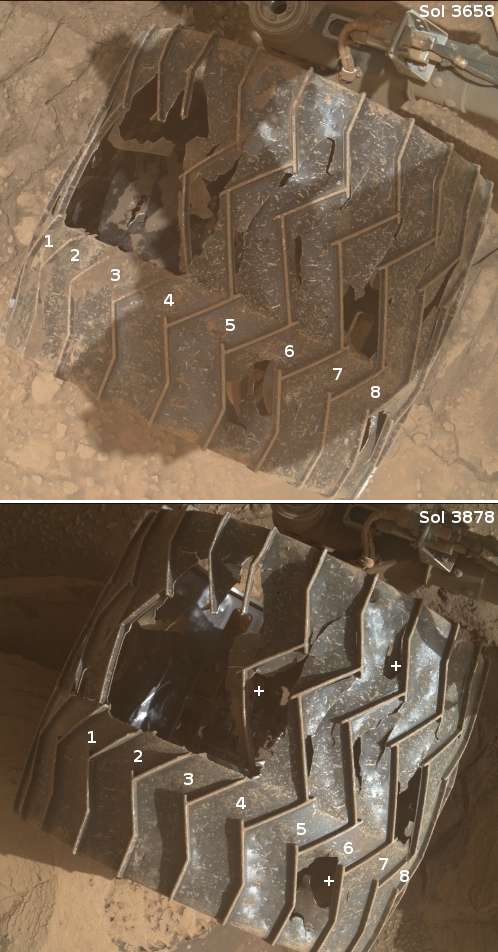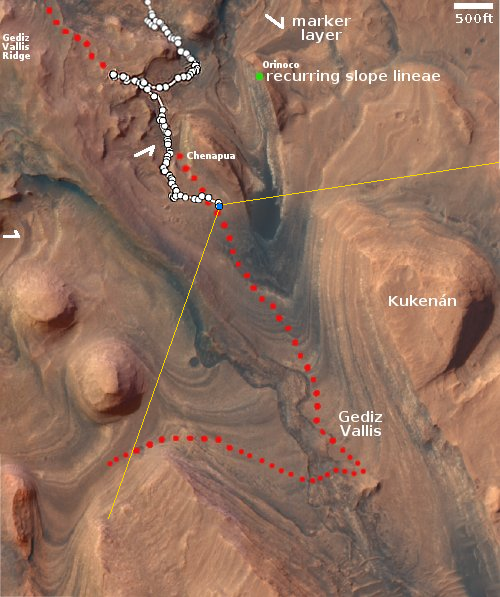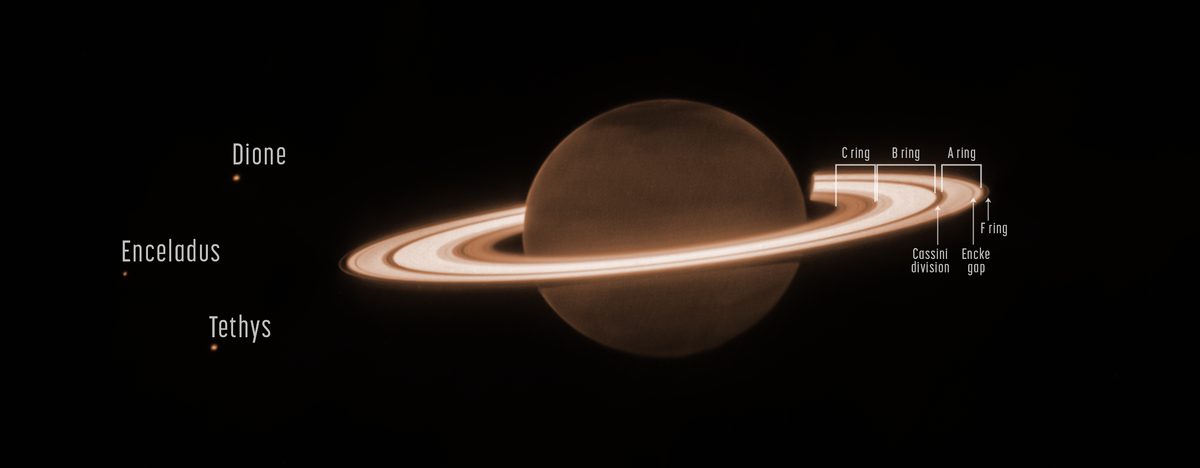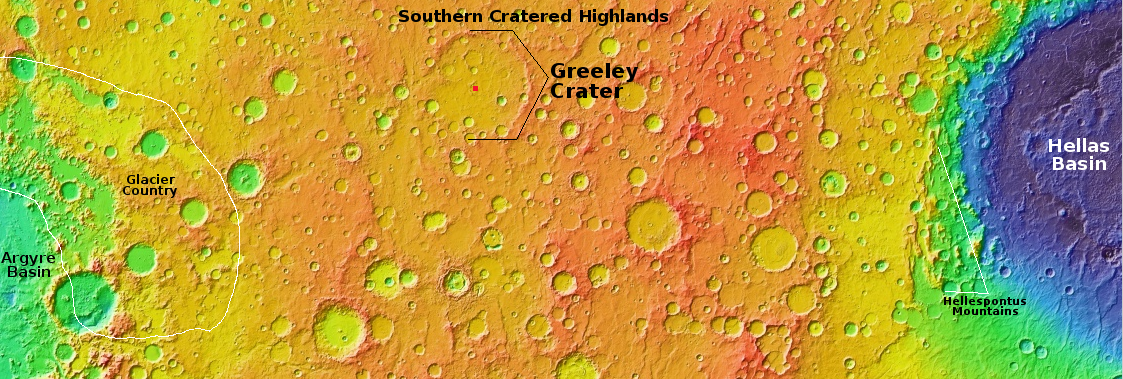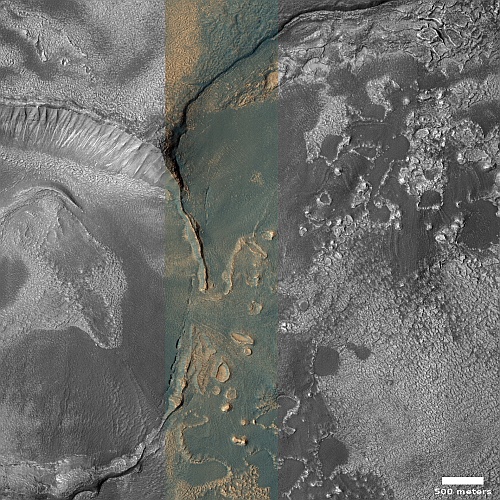Swirls draining into a Martian crater
Cool image time! The picture to the right, rotated, cropped, reduced, sharpened, and annotated to post here, was taken on April 8, 2023 by the high resolution camera on Mars Reconnaissance Orbiter (MRO).
The picture shows a terrain of swirls and terraced mesas. Because the shadows are deceptive, I have annotated the picture to show the actual drainage pattern of those swirls, suggesting that whatever material forms these swirls is not only draining about 200-250 feet down into the low point at the picture’s center, the swirls are also draining toward the small 1,000-foot-wide crater in the upper left. That crater however appears to lie on top of the swirls, which means it came after them.
What are the swirls made of?
» Read more
Cool image time! The picture to the right, rotated, cropped, reduced, sharpened, and annotated to post here, was taken on April 8, 2023 by the high resolution camera on Mars Reconnaissance Orbiter (MRO).
The picture shows a terrain of swirls and terraced mesas. Because the shadows are deceptive, I have annotated the picture to show the actual drainage pattern of those swirls, suggesting that whatever material forms these swirls is not only draining about 200-250 feet down into the low point at the picture’s center, the swirls are also draining toward the small 1,000-foot-wide crater in the upper left. That crater however appears to lie on top of the swirls, which means it came after them.
What are the swirls made of?
» Read more



